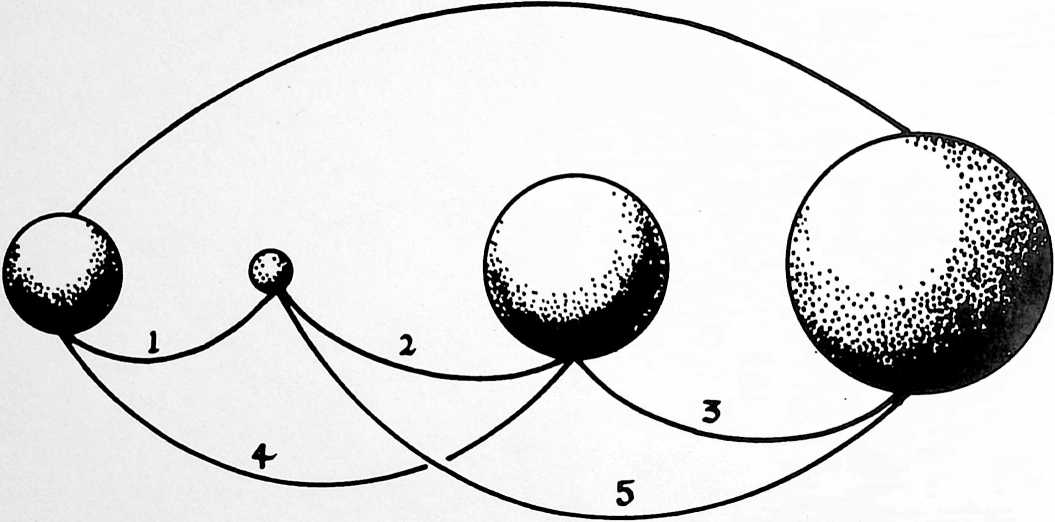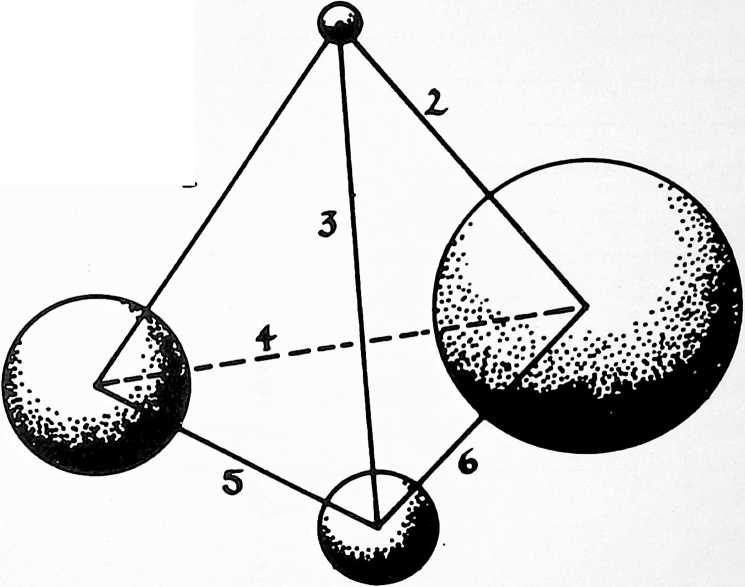¶ Order Underlying Randomness
This drawing is a spontaneous exercise in synergetic geometry illustrating the fundamental relationships between geometrical order and numerical order. Whenever Fuller sketched out an original conceptor repetitive amplifications thereof he liked to document the occasion by citing the time and place of execution. He did this for his own gratification, to celebrate his pleasure in the conceptual breakthrough, to record the event meticulously for his chronofile archives all perhaps not without some thought for posterity. The drawing is signed in his handwriting:
::: center
R. Buckminster Fuller
Sept-11-1963
15268 Earlham
Pacific Palisades, Cal.
:::
“Order Underlying Randomness” is the kind of exposition in which Fuller delighted. He loved to share this kind of graphic demonstration with lecture audiences and hundreds of blackboards have been temporarily filled to their furthest corners with these patterns of his geometrical accounting. Sometimes he would omit some of the events or vary their sequence, but this drawing is one of the most exhaustive expositions of a major theme: that there is a geometry of thinking, that understanding results from the accounting of the sum of all numerical and geometrical relationships, and that the aggregate of understood relationships is always tetrahedral.
E.J.A.


The genesis of numerical and geometrical accounting occurs with four initial events of experience. The device abovetwo concurrent aspects of the same phenomenon illustrates the origin of conceptuality in the recognition of the interval between the third and fourth periodic events of experience. Here in graphic form is the initial act of the geometry of thinking. It is used here as a colophon to the dictionary because it epitomizes the sensorial genesis of mathematical experience in physical reality with the transition from instability to stability and the creation of insideness and outsideness.
The closest Fuller ever came to giving a name to this figure is the term Linear Tetrahedron he employed in the caption to fig. 2 of Omnidirectional Halo (1963). It illustrates the dynamic pattern of events defining periodicity, frequency and shape in the minimum

geometrical consideration from which all other geometry and structure is derived. Hugh Kenner has called it “stability incarnate…a nest of principle.” Here is a symbol devoid of cultural nuance or mythological freight; it is pristinely abstract. Conceptually and geometrically, this linear tetrahedron is Fuller s minimum limit case.
An exhaustive philosophical and psychological exposition of the linear tetrahedron phenomenon may be foundin the context of “The Geometry of Self and Otherness”in Synergetics 2 (Fuller and Applewhite 1979) at secs. 265.08. Change: Add link Its evolution in Fuller s system of synergetics is documented in this dictionary in entries captioned as follows: Pattern, 1954; Change: Add link Star Events, 1960 Change: Add link , 2 Jul 1962, and Oct 1965; Change: Add link Intuition, 26 Dec 1974; Change: Add link Comprehension, 29 Sep 1976; Change: Add link and Metaphysical, 22 Jun 1977 Change: Add link .
E.J.A.